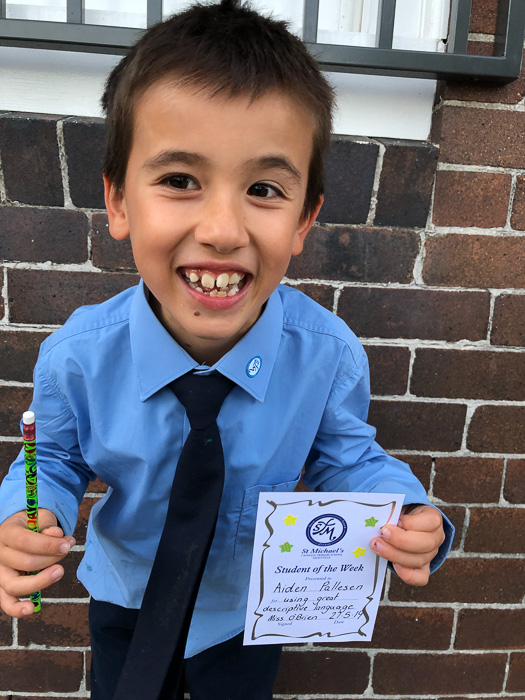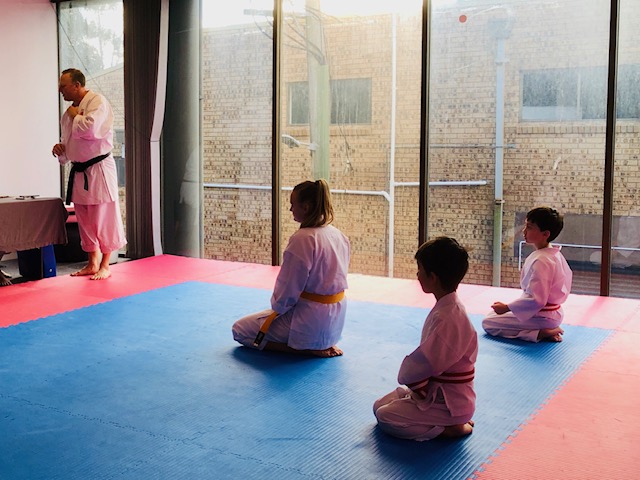22. August 2019 13:10
by Rene Pallesen
0 Comments
It is not often that Aiden gets an award for good work at school, but when he does, he is very proud.

10. August 2019 20:10
by Rene Pallesen
0 Comments
Earlier in the year at Easter time we went camping up at Barrington Tops 5 hours drive north of Sydney.
It is a very tall mountain range with some excellent walks, rivers etc.
We had a great weekend with friends sitting around the fire roasting marshmellows, walking and canoeing.
23. July 2019 10:07
by Rene Pallesen
0 Comments
8. July 2019 12:07
by Rene Pallesen
0 Comments
Fairly recently we started the boys on Karate.
We thought it would be a good activity for them to build strength, motor skills and discipline.
Especially Aiden is really enjoying it and putting in the hard work at home practicing. He has become stronger throughout the classes which is great. Before we started he had almost no core strength and now he is able to do sit-ups and pushups.
This weekend both Aiden and Lucas were pulled up for their first proper graduation from the white belts to the red belts and they both passed.

17. June 2019 20:06
by Rene Pallesen
0 Comments
2. April 2019 20:10
by Rene Pallesen
0 Comments
The Osaka aquarium is massive and very impressive. The centre piece is the massive tank in the middle with two large whale sharks and which is also full of other sharks such as hammerheads.
2. April 2019 20:10
by Rene Pallesen
0 Comments
Tontonburi is know as the chefs/kitchen area. Here you can buy everything needed for a japanese restaurant.
It is also full of actual restaurants and other oddities such as more exotic places. It has what is known as Osaka's best Ramen restaurant (the one with the long counter in the photos below) - and Yes, the Ramen was very good.
Here it is also possible to eat specialties such as the Puffa fish.
It was also one of the few places where I saw real Samurai swords for sale.
2. April 2019 20:10
by Rene Pallesen
0 Comments
Below the Osaka tower is a restaurant area with lots of yummi food.
The area was once a very modern part of Osaka, and worth a visit during the night.
2. April 2019 20:10
by Rene Pallesen
0 Comments
Osaka castle is a beautiful multi story pagoda like castle inside these massive moats and ramparts with several layers of defense.
2. April 2019 18:10
by Rene Pallesen
0 Comments
In Osaka we went to the Toei Film Studio.
This is an area where they have filmed lots of traditional Japanese movies and where they have all the old houses and also some theaters.
It is also used as a bit of an entertainment and cultural area to teach the Japanese about their culture. Surprisingly we seemed to be the only foreign tourists there and it was definitely worth the visit even though we didn't understand a word of what they were saying.